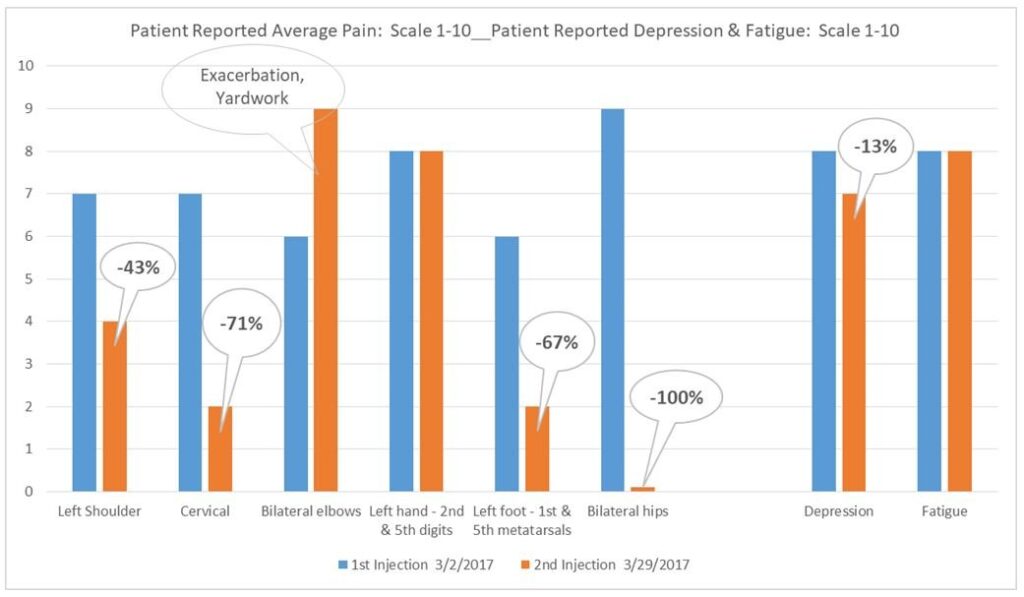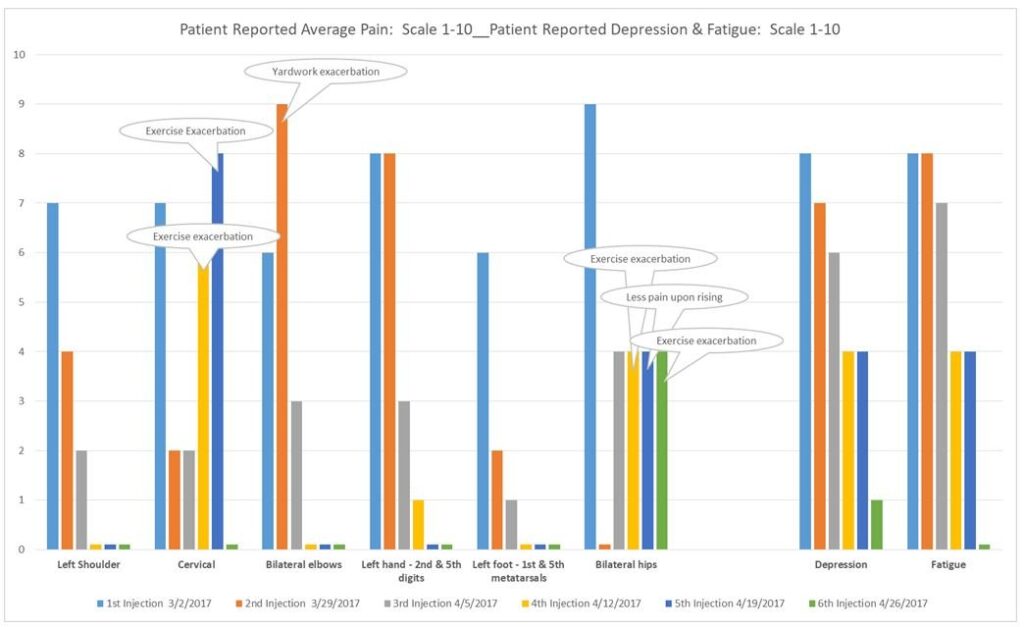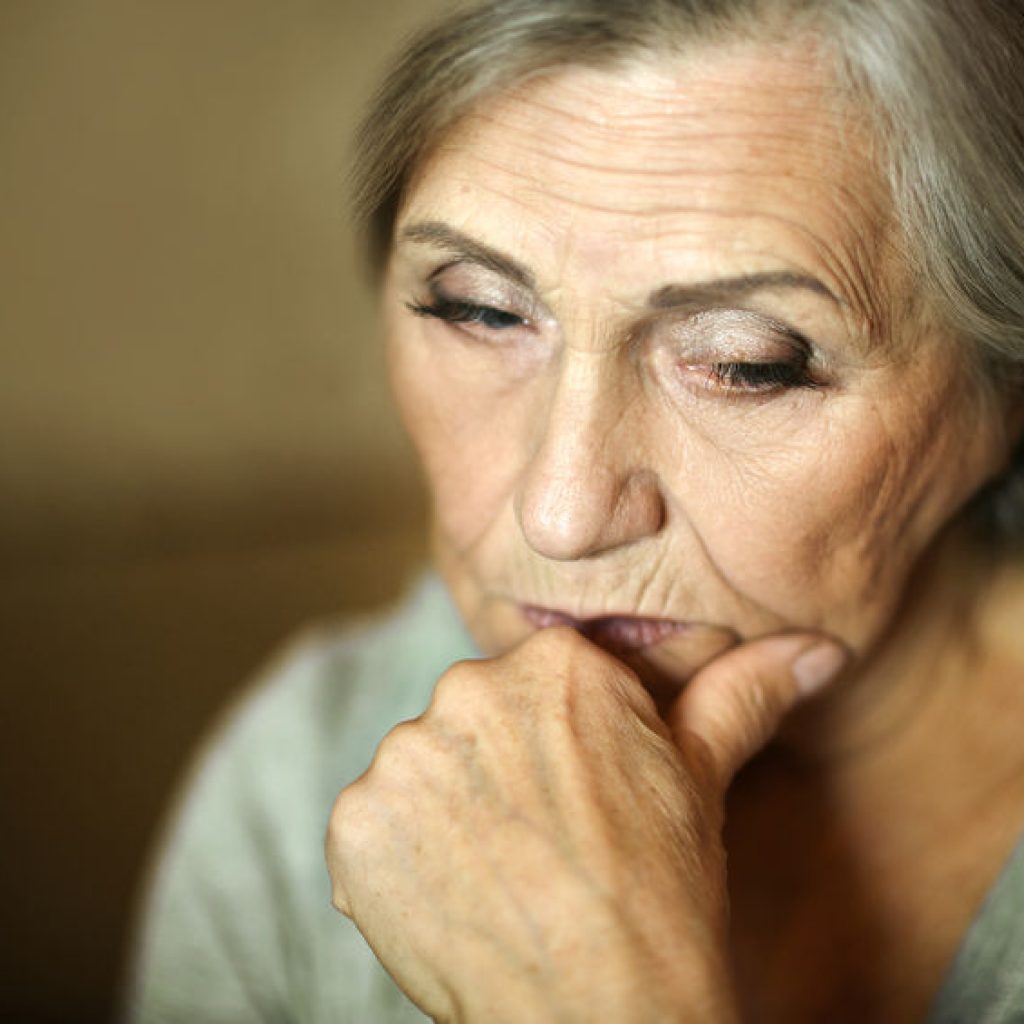Donese Worden, NMD
Naturopathic Perspective
Homeopathic medicines have a long history of clinical use for the treatment of chronic pain and depression. They may be used alone or integrated with other therapeutic modalities, including conventional medicine, traditional Chinese medicine, and naturopathic medicine. Homeopathic medications are available over the counter (OTC) and by prescription (Rx), and they have routes of administration ranging from topical to oral to injectable. A recent systematic evaluation of pharmacovigilance data found that homeopathic injections had a very low risk of adverse drug reactions.1
In this article, I present a case report of a female patient who responded well to combination homeopathic injections following a 20-year history of pain and depression.
To assess this patient’s pain, I used the Patient Reported Outcomes Measurement Information System (PROMIS®) – a patient-reported outcome measurement survey. PROMIS is a validated tool outcomes survey developed by The National Institutes of Health (NIH) almost 15 years ago to measure health outcomes in clinical settings.2
The Case
A 58-year-old woman presented in mid-February of 2017. She had a long history (20+ years) of depression, chronic pain (fibromyalgia), and endocrine disorders (adrenal fatigue), as well as poor nutrition and a long smoking history. In addition, she was obese and had been previously diagnosed with pre-diabetes as well as both rheumatoid- and osteoarthritis. Her current medications included metoprolol (100 mg), benazepril (20 mg), bupropion (450 mg), sertraline (200 mg), atorvastatin (10 mg), and ibuprofen (600 mg), as well as various nutritional supplements (see Table 1).
At intake the patient rated the severity of her pain using 3 PROMIS pain scales: pain at the present moment; pain at its worst; and pain intensity.3 She rated her pain as “severe” on all 3 scales.
Table 1. Current Medications
| Rx Medicine | Dosage | Frequency | OTC Medicine | Dosage | Frequency |
| Metoprolol | 100 mg | BID | DHEA | 10 mg | QD |
| Benazepril | 20 mg | QD | NAC | 1.2 g | QD |
| Bupropion | 450 mg | QD | DIM + glucoraphanin (broccoli extract) | 300 mg | 2 caps QD |
| Sertraline | 200 mg | QD | |||
| Atorvastatin | 10 mg | QD | Folate (as 5-MTHF with glucosamine) | 1 tablet in AM | QD |
| Ibuprofen | 600 mg | TID | Vitamin C | QD |
(DHEA=dehydroepiandrosterone; NAC=N-acetylcysteine; DIM=diindolylmethane; 5-MTHF=5-methyltetrahydrofolate)
Initial Visits: Treatment
At her first visit on February 16, 2017, prior to beginning injection treatment, this patient was started on a 2-week course of a proprietary detox kit comprised of 1 formula for lymphatic drainage and 3 formulas for hepatic, renal, and intestinal support (see Table 2). This approach was in accordance with the principles of drainage and detoxification used with combination homeopathic protocols.
Table 2. Components of Detox Kit
| Detox Lymph: For temporary relief of discomfort associated with lymphatic swelling and edema | Detox Liver: For temporary relief of liver and gallbladder-driven symptoms of indigestion | Detox Kidney: For temporary relief of pain and burning sensation associated with frequent or urgent need to urinate | Detox Intestinum: For temporary relief of symptoms of upset stomach and indigestion, such as bloating, abdominal fullness, nausea, and constipation |
| Arsenicum album 6X | Carduus marianus TM | Acidum nitricum 6X | Eichornia 1X |
| Clematis 4X | Chelidonium majus, radix 3X | Apis mellifica 3X | Okoubaka 2X |
| Conium 6X | Taraxacum officinale 3X | Belladonna 6X | Quassia amara TM |
| Lachesis 8X | Cantharis 4X | Taraxacum officinale 1X | |
| Mercurius bijodatus 8X | Juniperus communis 3X | ||
| Phytolacca 4X | Solidago virgaurea TM | ||
| Rhus toxicondendron 6X | |||
| Scrophularia nodosa, herba 3X | |||
| Sulphur 4X |
At her second visit, 2 weeks later, she received her first series of injections: bilateral subcutaneous paraspinal injections of combination homeopathic injections for depression, hepatic support, and lymphatic drainage (see Table 3). She also received subcutaneous injections of the formula to address adrenal fatigue. These injections were administered around the adrenal glands according to the Chinese medicine principle of addressing the organ of interest (Circling the Dragon).
Table 3. Components of Combination Homeopathic Injections
| Depression formula: Indicated for the treatment of nervous disorders, such as restlessness, sleep disorders, mild depressive states, and mental exhaustion | Hepatic support formula: Indicated for the improvement of liver and biliary system disorders | Lymphatic drainage formula: Indicated for the improvement of conditions such as swelling of lymph nodes and lymphatic edema |
| Cimicifuga racemosa 4X | Carduus marianus 4X | Arsenicum album 6X |
| Cocculus indicus 4X | Chelidonium majus, radix 6X | Clematis erecta 4X |
| Cypripedium pubescens 4X | Quassia 4X | Lachesis mutus 8X |
| Ignatia amara 6X | Taraxacum officinale 4X | Mercurius cynatus 8X |
| Passifora incarnata 4X | Phytolacca decandra 6X | |
| Platinum metallicum 10X | Rhus toxicodendron 6X | |
| Valeriana officinalis 4X | Scrophularia nodosa 4X | |
| Zincum valerianicum 8X | Sulphur 6X | |
| Thuja occidentalis 4X |
Follow-up Visits
At her third visit and prior to her second series of injections, the patient reported a large decrease in pain in 4 out of 6 identified pain points, as well as a slight decrease in depression (Figure 1). Her physical examination was otherwise unchanged and she agreed to continue the injection protocol.
Over the course of her next series of visits, the patient reported steady improvement in 4 out of 6 identified pain points, along with steady improvement in her depression and fatigue (Figure 2). The exceptions were cervical pain and bilateral elbow pain, which were exacerbated due to the addition of exercise and physical activity. It is worth noting that the patient had not participated in any significant physical activity for more than a year.
After 6 treatments that followed the same injection protocol, the patient reported that her depression was better than it had been in 15 years and that all of her pain points and fatigue were significantly decreased (Figure 2).
Figure 1. Changes in Pain & Depression After First 2 Injections

Figure 2. Changes in Pain, Depression & Fatigue After 6 Injections

Discussion & Conclusion
In addition to noting significant improvement, the patient experienced no adverse drug reactions from these homeopathic injections, consistent with previously published pharmacovigilance safety data.1 At the end of this course of treatment, the patient continued using, as needed, a mixed-homeopathic roll-on gel for trauma, as well as her nutritional supplements and exercise program.
For over 20 years, this patient had been prescribed multiple medications for depression and pain, which provided, at best, only intermittent relief. Once she began homeopathic injection therapy, she experienced significant relief and no adverse reactions. Homeopathic injection therapy may prove useful as a low-risk therapy for the treatment of patients with chronic medical problems such as chronic pain, arthritis, fibromyalgia, adrenal fatigue, and depression.
Disclaimer: Dr Worden has no financial relationship with the manufacturer of the products described in this article.
References:
- Jong MC, Jong MU, Baars EW. Adverse drug reactions to anthroposophic and homeopathic solutions for injection: a systematic evaluation of German pharmacovigilance databases. Pharmacoepidemiol Drug Saf. 2012;21(12):1295-1301.
- Cella D, Yount S, Rothrock N, et al. The Patient-Reported Outcomes Measurement Information System (PROMIS): progress of an NIH Roadmap cooperative group during its first two years. Med Care. 2007;45(5 Suppl 1):S3-S11.
- Revicki DA, Cook KF, Amtmann D, et al. Exploratory and confirmatory factor analysis of the PROMIS Pain Quality item bank. Qual Life Res. 2014;23(1):245-255.
Image Copyright: <a href=’https://www.123rf.com/profile_aletia’>aletia / 123RF Stock Photo</a>
 Donese Worden, NMD, is an Arizona-based physician and global health educator. Dr Worden is renowned for identifying and helping to bring unique healing modalities and therapies from abroad to the United States. She is a highly regarded expert in regenerative injection therapies and bioenergetic medicine. In 2014 she was the Hope Award recipient for Prevention and Education in Behavioral Health. Dr Worden has lectured to a variety of medical groups, medical schools, and major US hospitals. She appears frequently on TV and radio shows and news spots as a popular guest.
Donese Worden, NMD, is an Arizona-based physician and global health educator. Dr Worden is renowned for identifying and helping to bring unique healing modalities and therapies from abroad to the United States. She is a highly regarded expert in regenerative injection therapies and bioenergetic medicine. In 2014 she was the Hope Award recipient for Prevention and Education in Behavioral Health. Dr Worden has lectured to a variety of medical groups, medical schools, and major US hospitals. She appears frequently on TV and radio shows and news spots as a popular guest.




